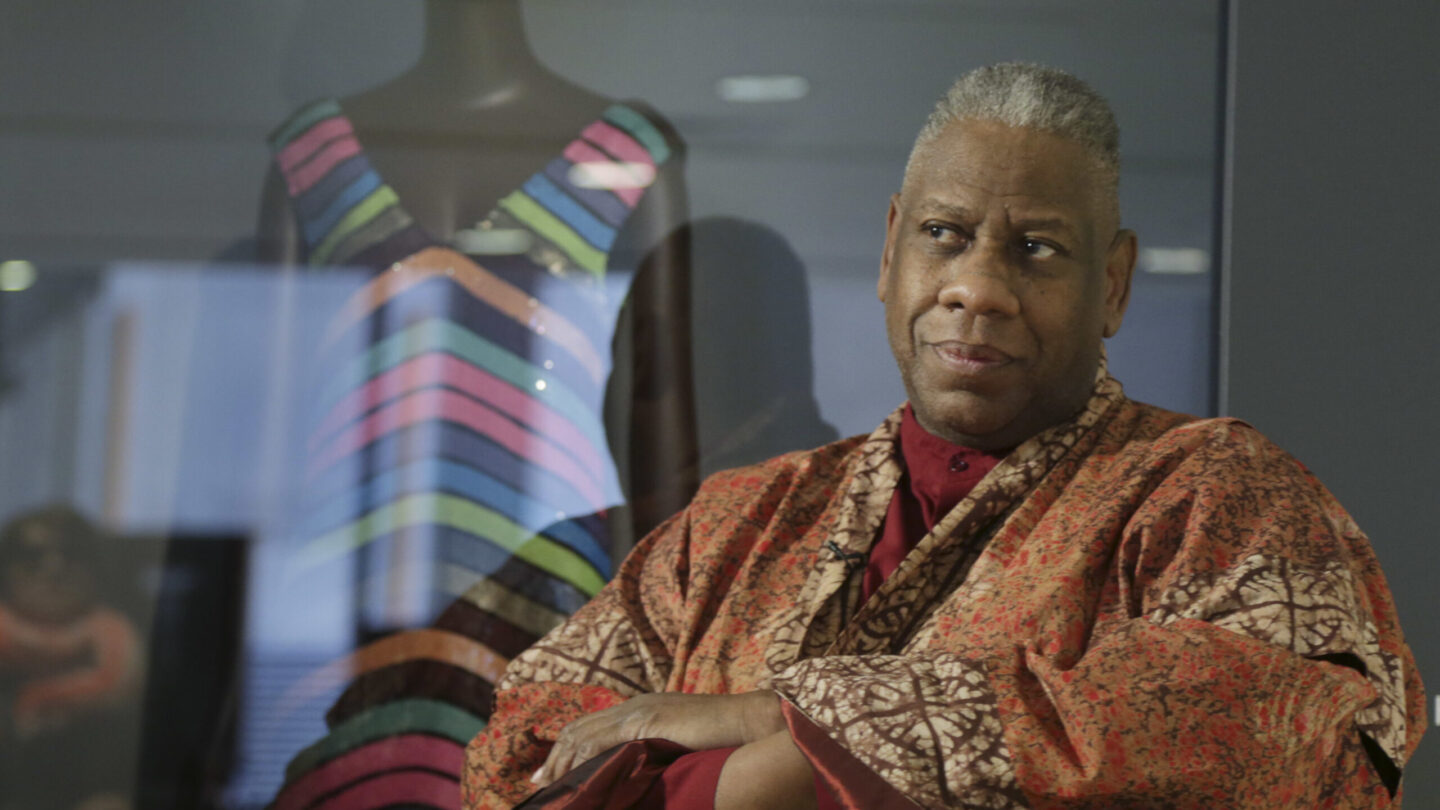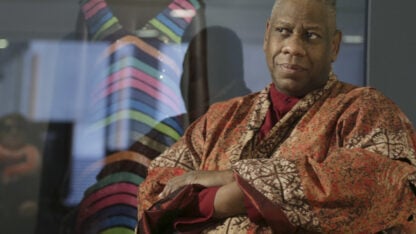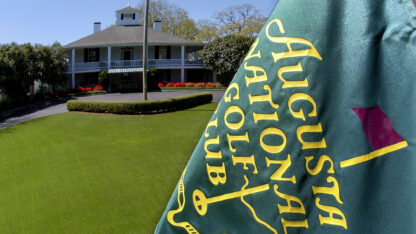Gail O'Neill reflects on the life and legacy of André Leon Talley

André Leon Talley, a former editor at large for Vogue magazine, speaks to a reporter at the opening of the “Black Fashion Designers” exhibit at the Fashion Institute of Technology in New York, Tuesday, Dec. 6, 2016. (AP Photo/Seth Wenig, File)
The pioneering editor of Vogue magazine, André Leon Talley, died on January 18 at age 73. He was a trailblazer as the first Black man to hold his position, an intellectual who brought a scholarly perspective and depth to his work. Gail O’Neill, Atlanta-based writer and editor of Arts ATL, joined “City Lights” host Lois Reitzes via Zoom to pay tribute to Talley’s expansive contributions in fashion media, culture and history.
Interview highlights:
The “operatic figure” of Talley, as Marc Jacobs once put it:
“He was such a larger-than-life character, and it feels surreal to be talking about André in the past because his life force remains so vivid,” said O’Neill. “But he was so exuberant and so over-the-top, and in some ways like a jester, that that could subsume his reputation as a scholar, as an academic, as a historian, as a cinephile, as someone who was so cultured and so elegant and so knowledgeable about the history of fashion.”
“You know how in the Black church… people are not quiet about their response to what they’re seeing and hearing? There’s exuberance and there’s applause that is not really permitted on the catwalks. In all of these fashion capitals, it’s considered inappropriate, but André didn’t mind being inappropriate. If he saw something he loved, he would explode.”
A virtuoso of fashion composition:
“André didn’t just assemble an outfit. There was some historical context that he was referencing. There was conjugation between the socks and the boater hat and the waistcoat that he was wearing, or the caftan later in life. There was always a story, much the way that an editor puts together a story for the pages of a magazine layout that André would convey…. It was important to him to present himself almost like someone would in the court of Louis XVI at Versailles.”
A young Talley, chasing style and beauty in a harsh world:
“André was born in Durham, North Carolina, during the Jim Crow era, and it was a very harsh contrast to the loving home environment he had with his grandmother who raised him in Durham,” said O’Neill. “So he describes being a teenager, going to the campus of Duke University… to buy his Vogue magazine from the magazine shop and having stones thrown at him, and André was very gentle as a young boy. He wasn’t one to fight, and of course, it could have cost him his life back in that time.”
“All he wanted was to seek beauty, and he described fashion and the pages of Vogue as a sanctuary.” said O’Neill. “Fashion for André was an escape from the harsher realities of the American South in the 1940s, 50s, and 60s – a place where there was refinement, elegance. There were manners. There were rules of comportment, and everyone followed those rules, and it was extremely aspirational. It lit up his imagination.”






